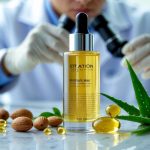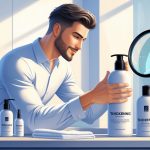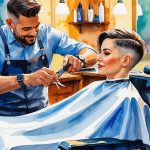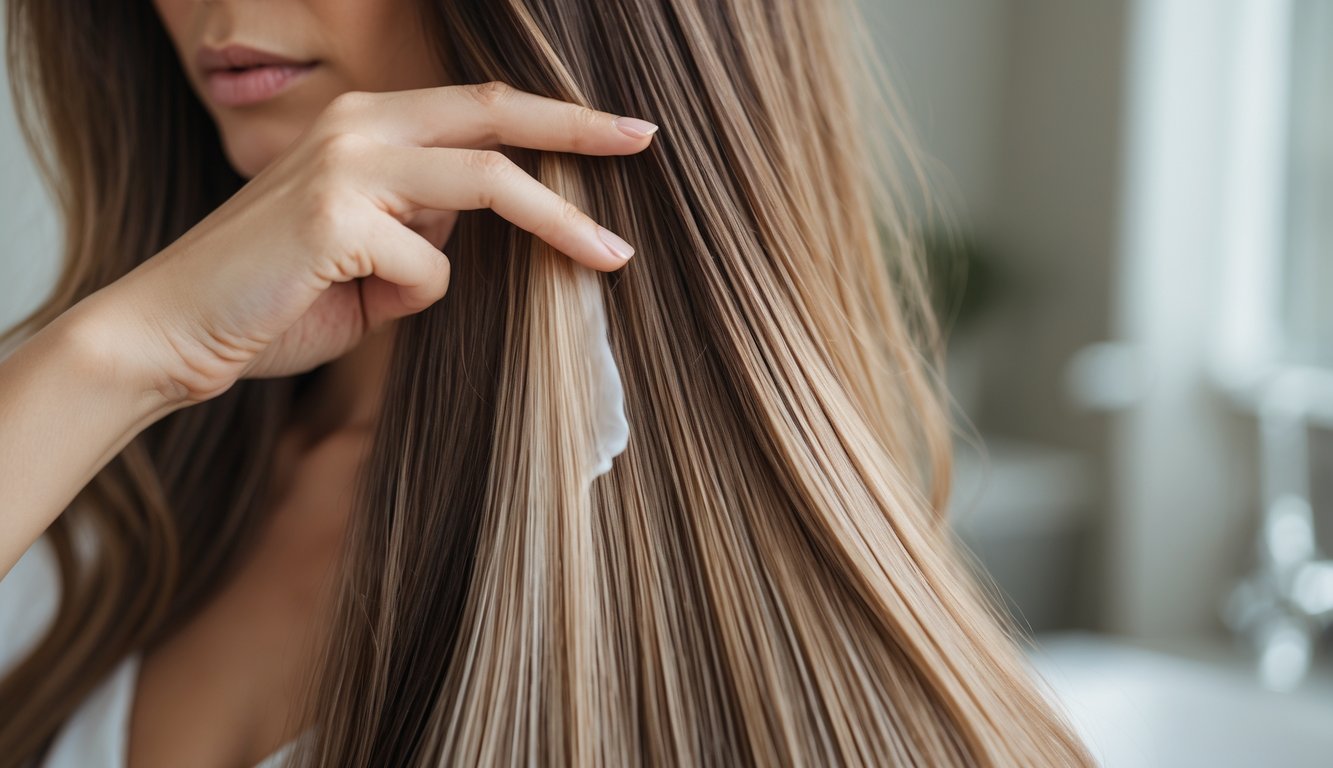
Other Ingredients and Products That Cause Fading
Every year, same brands, same “color-safe” promises, and my hair still fades before I even get my money’s worth. UV rays? Sure, but the real issue’s always in the bottle. The worst ingredients hide in the “everyday” stuff—no exaggeration.
Harsh Surfactants and Detergents
Let’s just call it out—sulfates like sodium lauryl sulfate and sodium laureth sulfate, the ones that make your shampoo bubble up like dish soap, are a disaster for color. My stylist complains every time: “Why do people want shine but bring me shampoos full of chemicals?” Sodium chloride, ammonium lauryl sulfate, all those cousins—they’re all designed to strip oil, and they do the same to your color.
It’s not just stylists whining. Color With Leo explains how sulfates rough up the cuticle and send your expensive dye swirling down the drain. Sure, the lather is fun—if you like faded hair.
Clarifying Shampoos and Their Intended Use
Clarifying shampoo? Basically a color grenade. Supposed to remove buildup, but honestly, it just erases weeks of color in one go. They use super-strong surfactants like sodium olefin sulfonate and citrus oil. I tried one after swimming—my brown turned orange. Never again.
Experts, blogs, even the bottle itself: clarifying shampoos are for emergencies, not daily use. But they’re always labeled “deep clean,” as if that’s what you want after a fresh dye job. Even HairSpeaks says clarifying is for resets only—otherwise, you’re just asking for faded color.
Parabens and Preservatives
I’m just going to say it: every hair product on my shelf brags about “long shelf life,” but what does that even mean for my scalp? Parabens, methylisothiazolinone—these things are everywhere, supposedly to keep stuff “fresh.” FDA claims methylparaben’s fine in tiny amounts, but honestly, does anyone trust that? Sometimes I swear the more preservatives a formula packs in, the harsher it feels on my head. Maybe it’s just me being paranoid. Or maybe not.
A few stylists I know have started sneaking over to preservative-free “color care” lines. They swear up and down that their clients’ scalps freak out less and the color, I don’t know, sticks around longer? There’s not much real research, but I keep hearing rumors that fewer chemical extras mean less dulling. Nobody wants moldy shampoo, obviously, but come on—parabens everywhere? I’m convinced my blondes lose their shine twice as fast, but the bottle just sits there, silent, all smug.
Water Quality and Environmental Stressors
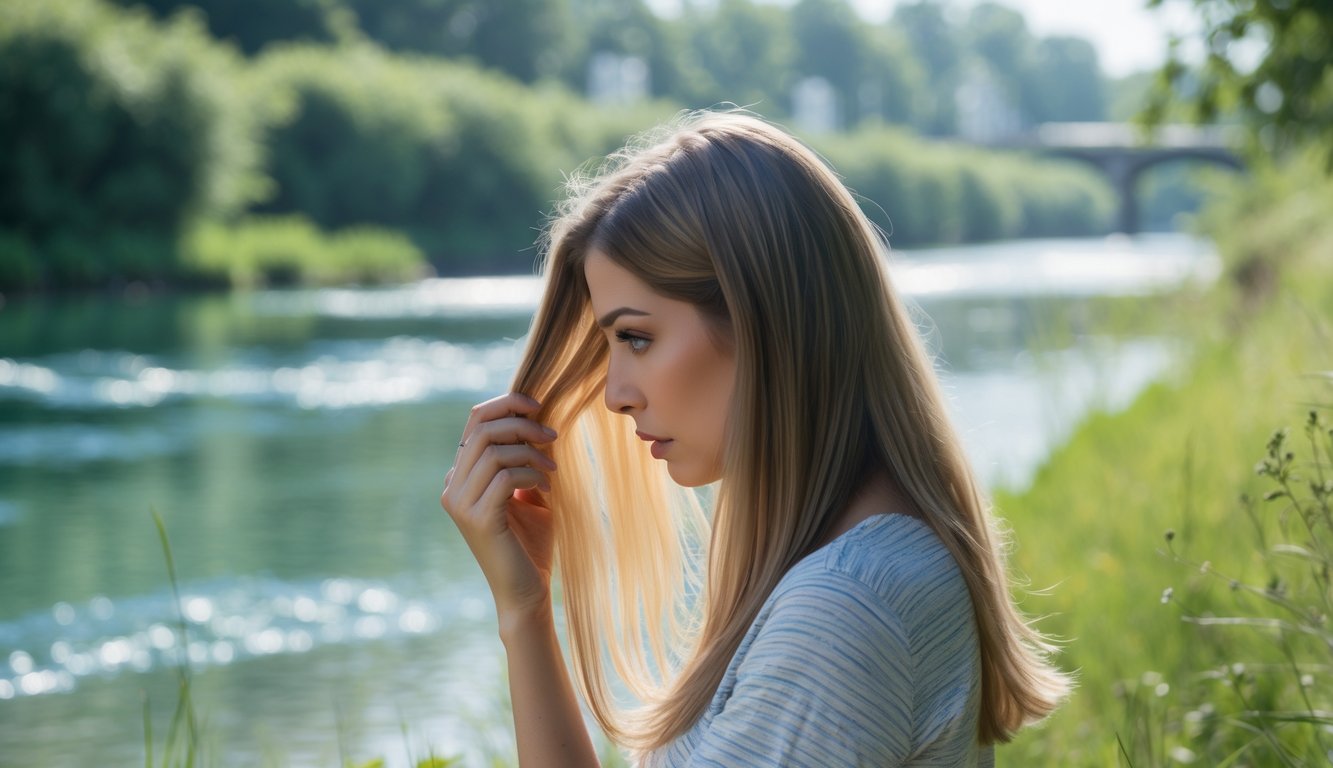
Lately, every single client complains about color fade. It’s relentless. One week, they’re glowing; two weeks later, they’re back, moaning about “ghost highlights” and washed-out tones. Is it the water? The minerals? That one time they swam in a weird hotel pool? I lose track. Three showers and their expensive color is toast.
Hard Water and Minerals
You think your filtered water’s safe? Please. Calcium and magnesium sneak through, clinging to every strand like they own the place. One rinse, your hair looks dull. Two, and that salon color is just a sad memory. Dr. Amy McMichael (a dermatologist who probably knows more than I do) says, “Mineral buildup creates a barrier that dulls and stains color-treated hair.” My neighbor won’t shut up about collecting rainwater, but let’s be real—who has time for that?
Clarifying shampoo sounds like the answer, right? Except, use it too much and you’re nuking your color even faster. It’s a circus act—once a week, maybe, then deep condition, and maybe splurge on a shower filter (skip the cheap ones, they’re a joke). Calcium still wins most days, but at least you can stall the fade.
Salt Water and Swimming
Every summer, someone asks, “Is salt water good for my balayage?” No. Sodium chloride gives you crunchy “beach hair,” but for color? It’s a disaster—extra dryness, more porosity, and your color just bleeds out. Tim, my stylist friend, always says, “A long weekend at the beach will bleach you two shades lighter, even with ‘waterproof’ dye.” I come back from vacation, and my hair needs three masks and a nap. Sun zap is no joke.
If you swim, soak your hair in fresh water first. Not glamorous, but it blocks some salt. I always forget and regret it. By Labor Day, I’m begging for toners. It’s boring, but it works, so nobody argues.
Chlorine Exposure
Pools. Chlorine. Ugh. Parents drag their kids in, complaining about green hair, and I barely pretend to be surprised. Here’s the thing: chlorine grabs copper, copper loves blondes, and suddenly icy silver turns swampy. Clarifying shampoo? Too late if it’s already green.
Pre-swim leave-in? Sort of works, if you remember. Or you could wear those swim caps (I never do, too embarrassing). If your towel reeks of pool chemicals, your hair’s probably worse off. The impact of environmental stress is real—minerals and chemicals eat shine and color. No miracle product fixes fried color from chlorine. You just have to rinse right after and accept you’ll be back at the salon, again.
The Effects of Sunlight and UV Rays
My stylist snickered when I came back from vacation, hair two shades lighter. UV rays just blast the color right out—melanin, dye, all of it. Hats help, but they’re not magic. It’s not just color, either; my hair comes home from the sun feeling weirdly stiff and frayed at the ends, like it’s just given up.
Sun Exposure and Hair Color Breakdown
Every single time: one weekend at the beach and my brunette turns into this sad, brassy fog. Pinterest lies, by the way. UV rays don’t care how much you paid for your color—science says they literally break down melanin, so both natural and dyed pigment just vanish. Dr. Alan Bauman (trichologist, actual expert) says, “Excessive sunlight degrades the hair shaft, especially in color-treated hair. The outer cuticle lifts, letting color molecules escape.”
Blondes and reds get it worst, but dark hair isn’t safe either—sun exposure dulls everyone’s color. Chemically treated hair’s already fragile, so UV just speeds up the disaster. Washing less doesn’t help if the sun’s already done the damage. My cousin claims her hair feels dry even after slathering on “fancy” leave-ins—so what’s the point, really?

